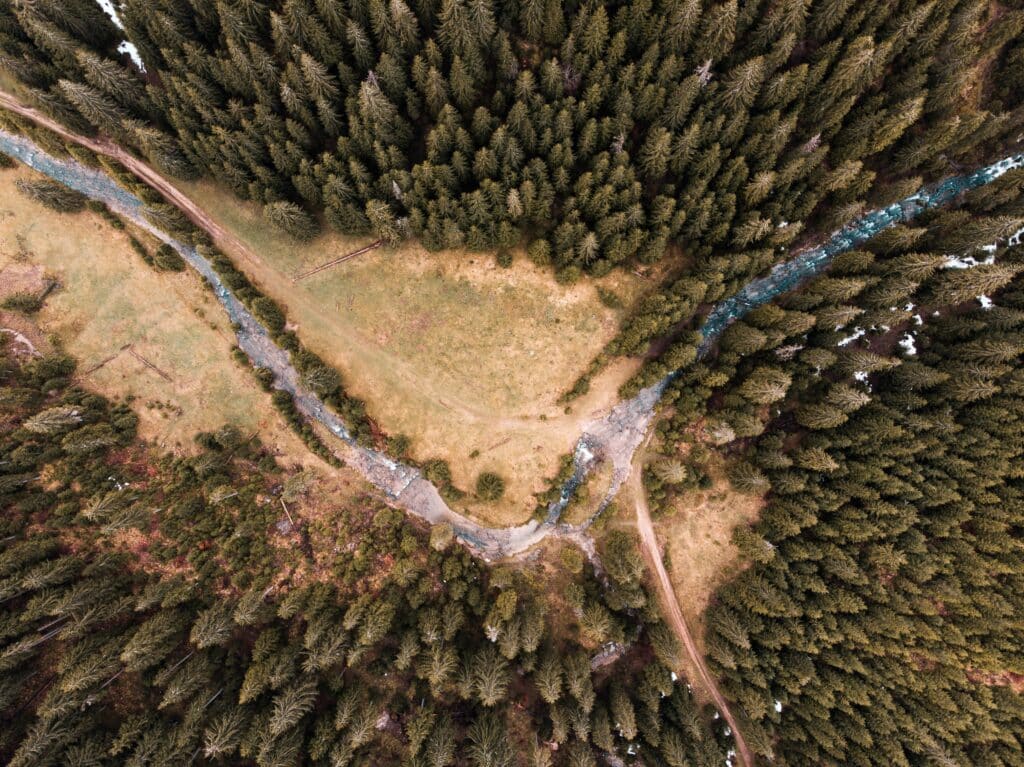What does undeveloped land mean? What is the difference between undeveloped and developed land? And where can you find undeveloped land for sale? In this blog post, we will answer all of these questions and more. We will discuss the definition of undeveloped land, what it means for a property to be undeveloped, and some of the benefits and drawbacks of owning undeveloped land. If you are considering buying undeveloped land or are just curious about this term, this blog post is for you! We'll tell you where to find it and how to purchase it online too.
What Is Undeveloped Land?

Simply put, undeveloped land is land that has not been developed for human use. This can mean a few different things; the land may be left in its natural state, used for agricultural purposes, or used for grazing. Also referred to as “raw land” or “unimproved land,” undeveloped land is often vacant or uninhabited and lacks buildings, infrastructure, or utilities.
What is the Difference Between Undeveloped and Developed Land?

Developed land, on the other hand, is land that has been improved for human use. This usually means the land has been built on or altered with private and public capital investments. Developed land may have houses, roads, utilities, and other infrastructure. In short, developed land is ready for human habitation or other improved uses, while undeveloped land is not.
What Are the Uses for Undeveloped Land?
People tend to think of rural areas and dirt roads when it comes to undeveloped land, but you can find undeveloped land in the city too.
Undeveloped land can be used for many purposes, including:
- Recreation, like hunting, fishing, hiking, and camping.
- Leasing to farmers for crops and ranchers for grazing.
- Conservation management, wildlife habitat, and greenbelts.
- Use for storage or as a parking lot.
- Seasonal carnivals, fairs, farmer's markets, and events
Pros of Buying Undeveloped Land
There are many benefits to owning undeveloped land, including:
- Flexibility: You have more freedom to do what you want with the land on your timetable.
- Lower Costs: Undeveloped land is usually cheaper than developed land.
- Passive Investment: Land can be a great long-term, passive investment and inflation hedge.
- Low Holding Costs: Low taxes and low maintenance costs make land cheap to hold.
- No Maintenance: Land doesn't depreciate and decay over time like a house.
- Recreation: You can use the land immediately for recreation or conservation.
Cons of Buying Undeveloped Land
However, there are also some drawbacks to owning undeveloped land, including:
- Harder to Finance: It can be difficult to finance the purchase of undeveloped land; land loans tend to require larger down payments and have higher interest rates.
- Utilities: You may need to invest significant capital in infrastructure, roads, and utilities.
- Zoning Restrictions: The local municipality or county may dictate what you can and cannot do with the land without permitting, approvals, and re-zoning.
- Access: Some land is difficult to access seasonally or legally inaccessible altogether.
- Time: If you plan on building, it will take time before you can move in.
- Remote: The land may be located in a remote area with poor or no cellular phone coverage and limited emergency services.
The Cost Of Building A House On Undeveloped Land
Building your own home on undeveloped land can be incredibly rewarding and challenging if you want to get away or start from scratch. The cost of building will vary greatly by region, depending on the availability and demand for building supplies and contractors. In most cities, competition and options will keep building costs in check, but building in rural areas can be much more complex, costly, and slower. The size, layout, materials, and complexity of your home design will greatly impact your overall building costs.
Without getting too much into the specifics of a particular design or region, here are some additional costs to consider when building a house on undeveloped land:
- Site Clearing: Clearing and grading the land for the house's footprint, outbuildings, utilities, and a staging area for construction.
- Access: Clearing, grading, and building an all-weather road, including culverts for drainage and bridges for stream crossings.
- Testing: Environmental testing, including soil stability and compaction tests, perc tests, and a Phase 1 Environmental Site Assessment.
- Permitting: Some construction and improvements will require permitting and inspections depending on the location and area.
- Utilities: Paying to install and connect to existing, local utilities or constructing stand-alone utilities like drilling a water well and installing a septic system.
- Fencing: To publicly and legally designate your property, you may need to survey, clear, and fence the property's boundary.
How to Find Undeveloped Land for Sale
Finding undeveloped land for sale is more difficult than finding homes for sale.
Homes are almost universally marketed on the regional Multiple Listing Systems (MLS) which is pushed out and syndicated to real estate listing sites like Realtor.com and Zillow. In smaller towns and cities, there tend to be a few dominant agents who get all of the listings, and in larger towns, competition for home listings is fierce, and brokers and agents market their services and listings heavily. With a few clicks or calls, you'll be on the right path towards finding a home.
On the other hand, the marketing of undeveloped land can be fragmented, decentralized, and buried on the internet. At times, these properties can be much harder to find. The regional MLS's were built principally to sell homes, and there isn't nationwide MLS coverage. Not all realtors are members of the MLS either. And some rural areas are still dominated by “old school” brokers and agents who are slower to adapt to changing consumer preferences and modern property marketing techniques. A broker's listing website alone doesn't generate traffic and exposure.
Finally, even with Realtor.com and Zillow, the listings are not 100% identical; properties will be marketed on one but not the other. This issue is further exacerbated when searching for undeveloped land on other land listing sites. Be prepared to look in multiple places.
Where to Find Undeveloped Land for Sale
If there is an MLS alternative when searching for land for sale, it's Costar's trifecta of land listing sites: LandWatch, Lands of America, and Land and Farm. Although there will be duplicate listings across all three sites, each website has its own collection of undeveloped and developed land listings, comprising everything from a typical home to a 100,000+ acre working cattle ranch.
You can specifically filter your search by a host of conditions and fields including acreage, price, and location, or even search broadly for “undeveloped land”:
- Undeveloped land for sale on LandWatch
- Undeveloped land for sale on Lands of America
- Undeveloped land for sale on Land and Farm
Despite their latent deficiencies in listing and mapping land, Realtor.com and Zillow are important listing sites to browse for undeveloped land. The ten states listed below are the most popular searches.
- Land for sale in Arizona (Realtor.com, Zillow)
- Land for sale in Colorado (Realtor.com, Zillow)
- Land for sale in Florida (Realtor.com, Zillow)
- Land for sale in Georgia (Realtor.com, Zillow)
- Land for sale in Montana (Realtor.com, Zillow)
- Land for sale in Maine (Realtor.com, Zillow)
- Land for sale in Tennessee (Realtor.com, Zillow)
- Land for sale in Texas (Realtor.com, Zillow)
- Land for sale in Oklahoma (Realtor.com, Zillow)
- Land for sale in Wyoming (Realtor.com, Zillow)
Beyond the MLS and Costar listings, you'll find properties on rural broker sites, like Mossy Oak, or tertiary land listing sites, like LandFlip.
Finally, for a more exhaustive list of alternative websites, see our “65 Best Web Sites to Find Land for Sale.“
Happy land hunting! 😊

